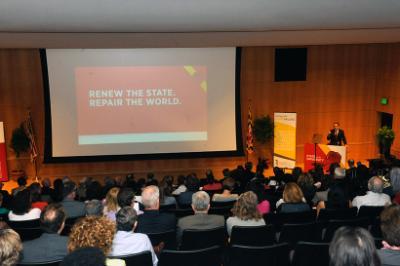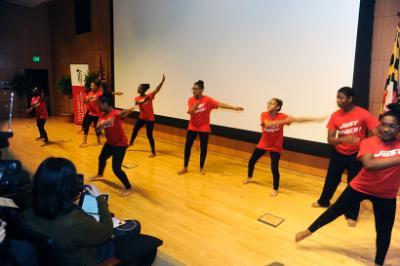About UMB History, highlights, administration, news, fast facts
- Accountability and Compliance
- Administration and Finance
- Center for Information Technology Services
- Communications and Public Affairs
- Community Engagement
- Equity, Diversity, and Inclusion
- External Relations
- Government Affairs
- Philanthropy
- Office of the President
- Office of the Provost
- Research and Development
- University Counsel
- Office of the President
- Administrative Officers
- Deans
- Boards of Visitors
- Faculty Senate
- Staff Senate
- University Counsel



 There is nothing like the sight of children to inspire hope, so it was only fitting that University of Maryland, Baltimore (UMB) President Jay A. Perman, MD, began his second annual State of the University Address on May 7 with a performance by the sixth-grade dancers from Southwest Baltimore Charter School.
There is nothing like the sight of children to inspire hope, so it was only fitting that University of Maryland, Baltimore (UMB) President Jay A. Perman, MD, began his second annual State of the University Address on May 7 with a performance by the sixth-grade dancers from Southwest Baltimore Charter School. The annual State of the University Address grew out of the transparency and accountability component of the University’s 2011-2016 strategic plan. It also fits into UMB’s core values of accountability, civility, collaboration, diversity, excellence, knowledge, and leadership.
The annual State of the University Address grew out of the transparency and accountability component of the University’s 2011-2016 strategic plan. It also fits into UMB’s core values of accountability, civility, collaboration, diversity, excellence, knowledge, and leadership.